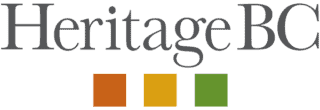- Heritage 101
- Advocacy
- Accessibility for Historic Places
- Climate & Sustainability
- Cultural Maps
- Heritage Place Conservation
- Heritage Policy & Legislation
- Homeowners
- Intangible Cultural Heritage
- Reconciliation
- Indigenous Cultural Heritage
- Setting the Bar: A Reconciliation Guide for Heritage
- 1. Heritage and Reconciliation Pledge
- 2. Acknowledging Land and People
- 3. Celebrating Days of Recognition and Commemoration
- 4. With a Commitment to Learn
- 5. Committing to Strategic Organizational Diversity
- 6. Mission-Making Room for Reconciliation
- 7. Possession, Interpretation, Repatriation and Cultural Care
- 8. Shared Decision Making
- 9. Statements of Significance and other heritage planning documents
- 10. Heritage Conservation Tools, Local Government Act
- Racism: Do Not Let the Forgetting Prevail
- Taking Action: resources for diversity and inclusion
- Webinars On-Demand
ICH and the BC Context
How important are an official definition and specific legislation? Do we need a definition and legislation specific to the BC context?
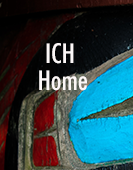 |
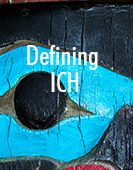 |
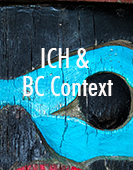 |
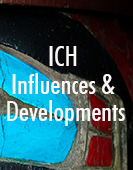 |
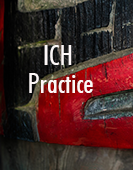 |
 |
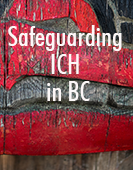 |
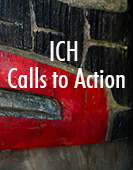 |
Katharine
There are great examples within Canada doing this work on provincial legislation… for example, in Newfoundland, and in Quebec. More recently in Saskatchewan has also become active in this area, with our colleagues over at Heritage Saskatchewan earning accreditation to the UNESCO 2003 Convention.
Specific legislation is important if the resources and supports to intangible cultural heritage are built into it.
Similarly, along the lines of the Ethical Principles, the definition is something that probably should come from the bottom up – and we have great examples here in Canada. It is up to communities to define their own cultural heritage in a way that makes sense to them and helps them continue to practice their traditions. Legislation can help by providing the resources and frameworks to make it easier for them.
Agnieszka
I think the East Coast is doing a fantastic job at inventorying intangible cultural heritage. They are doing a lot of the policy work. Quebec has passed included intangible cultural heritage in legislation; Heritage Saskatchewan is also doing a lot of work in the ICH area. I think the discourse is growing in popularity among local communities. I think it is the city of Calgary that has also included the ICH discourse in city planning, and Vancouver is looking at intangible cultural heritage as something that needs to be protected as the climate changes. There are a lot of international examples that I think we can learn from as well and bring to BC.
As we consider ICH, one thing that needs to be carefully evaluated is intellectual property. Heritage Sensitive Intellectual Property and Marketing strategies (HIPAMS) for example, is an organization working out of India and partnering with the British Museum. This organization is working on effective protective measures and intellectual property rights for knowledge holders and ICH custodians. I think some of those principles are useful and we can learn from them, especially as we consider intellectual property in the area of arts and crafts, music, and medicines and knowledge relating to health.
Intellectual property-related issues need to be carefully evaluated and we need to learn from some of the best practices that are out there in the world if we want to bring ICH-work over to BC and Canada.
I think we can work on our own definition, and we can work on something that’s very contextual. That doesn’t mean we cannot learn from all the examples that are out there and learn from them. We can jump from them rather than reinvent the wheel.
Again, we can learn from HIPAMS and for example, rely on some of their theoretical configurations to address some do the Indigenous-intellectual property related issues.
Specifically, while some of the Indigenous intellectual property issues do not necessarily fit into the Canadian intellectual property framework and while there are limitations in the Canadian approach to intellectual property, such a partnership can be a great start. This means we can learn from the Indian context and draw our own ways to address how intellectual properties that are collective in nature can be useful for communities without necessarily adhering to the notion of ‘property’ or limited to the 50 year time-restriction.
Some of those principles relating to ICH can definitely be brought into BC, and I think they set a nice precedent for community approaches to ensuring their heritage is transmitted and their sustainable livelihoods protected.
George
Yes, to come back to your question about definitions, single definitions are useful in a generic fashion, but are often constraining. They are often developed by a specific group for a specific purpose but, no matter how representative that group is, there tends to be far greater diversity, both between and within descendant communities. Thus, a single overarching definition is something that can be useful but needs to be modified relative to community-based heritage values, for example. Acknowledging such diversity is one way to move beyond the colonial structure is of heritage protection and legislation right now.
Returning to the comments about intangible cultural heritage rights, I was the director of the Intellectual Property Issues in Cultural Heritage project (IPinCH), based here in British Columbia, but of international scope. In exploring the nature and challenges of cultural appropriation, intellectual property rights and so on, we were aware that there are significant differences between Western definitions and indigenous definitions of intellectual property.
For example, intellectual property in the West is primarily defined in economic terms, and is considered the product of individuals or their employers, with protection of rights provided through trademarks, patents, copyrights and similar means.
In contrast, indigenous intellectual property is often communal, based on relationships. While there are economic aspects to it, there are also religious, social and cultural aspects that cannot be denied. Unfortunately, there is generally little legal protection for Indigenous intellectual property.
This illustrates the importance of understanding the differences between these different legal realms, as it were, relative to intangible heritage and intellectual property.
A Note about IPinCH
From 2008 to 2016, IPinCH explored the diverse values underlying attitudes, decisions, and actions relating to IP issues in heritage, and providing research, knowledge, and resources assisting academic scholars, descendant communities, and others in negotiating equitable terms of heritage research and policies. The team included more than fifty archaeologists, museum and cultural tourism specialists, lawyers, ethicists, and others. This initiative was ultimately concerned with larger issues of the nature of knowledge and rights based on culture—how these are defined and used, who has control and access, and especially how fair and appropriate use and access can be achieved to the benefit of all stakeholders in the past.
For more information:
See George Nicholas and Catherine Bell. 2021. Intellectual Property and Archaeology: Research Concerns and Considerations. In Handbook on Intellectual Property Research, edited by I. Calboli and M.L Montagnani, pp. 304-329. Oxford University Press; also Mary Riley (editor,. 2004. Indigenous Intellectual Property Rights: Legal Obstacles and Innovative Solutions. Walnut Grove, CA: AltaMira Pressand Matthew Rimmer (editor), 2015. Indigenous intellectual property. A handbook of contemporary research. Cheltenham: Elgar.
